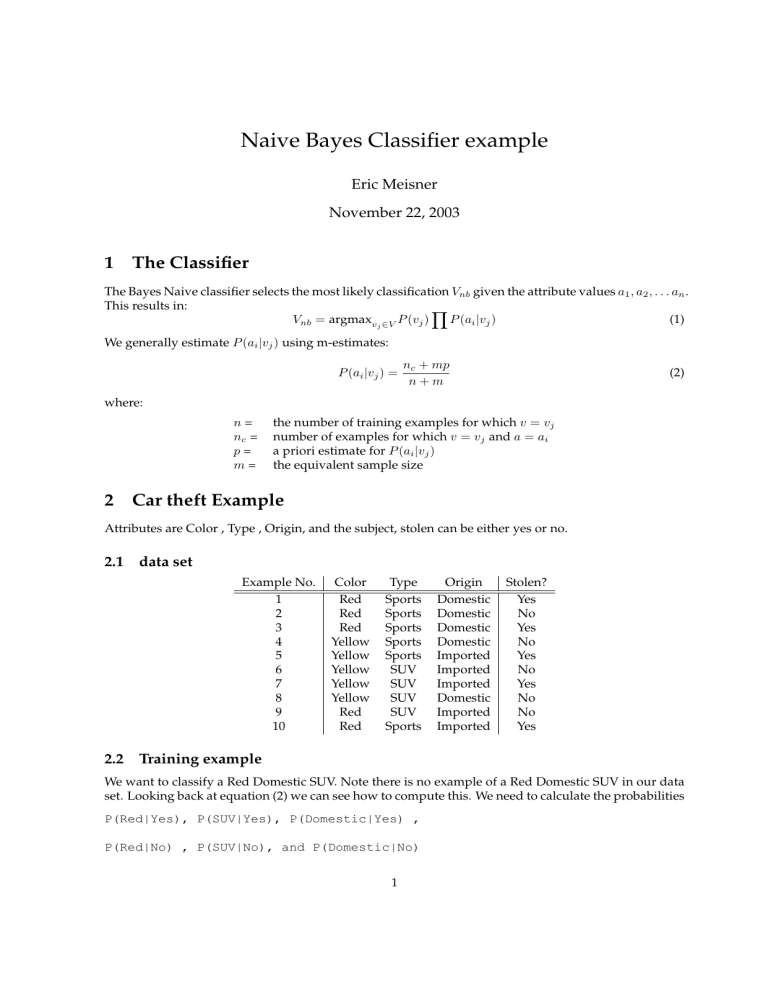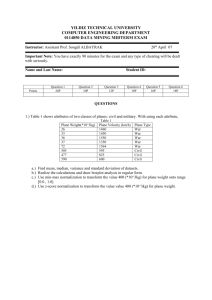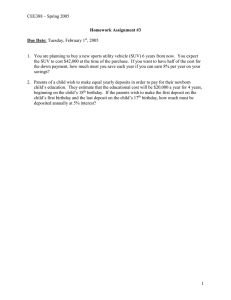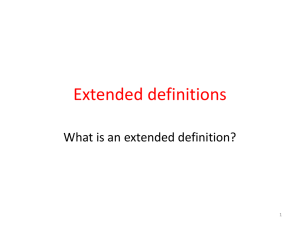
Naive Bayes Classifier example Eric Meisner November 22, 2003 1 The Classifier The Bayes Naive classifier selects the most likely classification Vnb given the attribute values a1 , a2 , . . . an . This results in: Y Vnb = argmaxvj ∈V P (vj ) P (ai |vj ) (1) We generally estimate P (ai |vj ) using m-estimates: P (ai |vj ) = nc + mp n+m (2) where: n= nc = p= m= 2 the number of training examples for which v = vj number of examples for which v = vj and a = ai a priori estimate for P (ai |vj ) the equivalent sample size Car theft Example Attributes are Color , Type , Origin, and the subject, stolen can be either yes or no. 2.1 data set Example No. 1 2 3 4 5 6 7 8 9 10 2.2 Color Red Red Red Yellow Yellow Yellow Yellow Yellow Red Red Type Sports Sports Sports Sports Sports SUV SUV SUV SUV Sports Origin Domestic Domestic Domestic Domestic Imported Imported Imported Domestic Imported Imported Stolen? Yes No Yes No Yes No Yes No No Yes Training example We want to classify a Red Domestic SUV. Note there is no example of a Red Domestic SUV in our data set. Looking back at equation (2) we can see how to compute this. We need to calculate the probabilities P(Red|Yes), P(SUV|Yes), P(Domestic|Yes) , P(Red|No) , P(SUV|No), and P(Domestic|No) 1 and multiply them by P(Yes) and P(No) respectively . We can estimate these values using equation (3). Yes: Red: n = 5 n_c= 3 p = .5 m = 3 SUV: n = 5 n_c = 1 p = .5 m = 3 Domestic: n = 5 n_c = 2 p = .5 m = 3 No: Red: n = 5 n_c = 2 p = .5 m = 3 SUV: n = 5 n_c = 3 p = .5 m = 3 Domestic: n = 5 n_c = 3 p = .5 m =3 Looking at P (Red|Y es), we have 5 cases where vj = Yes , and in 3 of those cases ai = Red. So for P (Red|Y es), n = 5 and nc = 3. Note that all attribute are binary (two possible values). We are assuming no other information so, p = 1 / (number-of-attribute-values) = 0.5 for all of our attributes. Our m value is arbitrary, (We will use m = 3) but consistent for all attributes. Now we simply apply eqauation (3) using the precomputed values of n , nc , p, and m. 2 + 3 ∗ .5 = .43 5+3 3 + 3 ∗ .5 P (SU V |N o) = = .56 5+3 3 + 3 ∗ .5 P (Domestic|N o) = = .56 5+3 3 + 3 ∗ .5 = .56 5+3 1 + 3 ∗ .5 P (SU V |Y es) = = .31 5+3 2 + 3 ∗ .5 P (Domestic|Y es) = = .43 5+3 P (Red|N o) = P (Red|Y es) = We have P (Y es) = .5 and P (N o) = .5, so we can apply equation (2). For v = Y es, we have P(Yes) * P(Red | Yes) * P(SUV | Yes) * P(Domestic|Yes) = .5 * .56 * .31 * .43 = .037 and for v = N o, we have P(No) * P(Red | No) * P(SUV | No) * P (Domestic | No) = .5 * .43 * .56 * .56 = .069 Since 0.069 > 0.037, our example gets classified as ’NO’ 2




